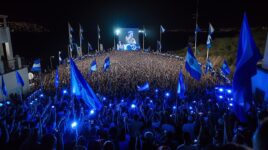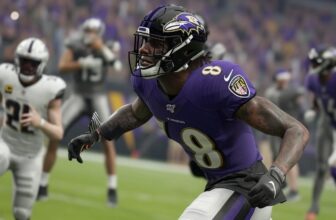
How Does El Salvador Celebrate Independence Day
El Salvador, a small Central American country, celebrates its Independence Day with great fervor and enthusiasm. This article will provide a detailed insight into the various traditions, symbols, and cultural events that make this day truly special for the people of El Salvador. From historical significance to modern-day celebrations, the Independence Day of El Salvador holds a deep place in the hearts of its citizens.
On September 15th every year, El Salvador commemorates the anniversary of its independence from Spanish colonial rule. This day is marked with vibrant festivities that showcase the rich culture and heritage of the country. Throughout this article, we will explore the historical background of El Salvador’s independence, traditional symbols and decorations used during the celebrations, traditional food and drinks served on this day, as well as cultural events, parades, and processions held across different cities and towns.
The blue and white colors of El Salvador’s flag hold significant meaning for the people of this nation, and we will delve into their importance during Independence Day celebrations. Additionally, we will also take a closer look at the traditional dances and music performed during these festivities. Furthermore, we will discuss how schools, community groups, and government bodies come together to partake in the celebrations.
While honoring tradition is paramount during Independence Day in El Salvador, it is also intriguing to examine how modern-day celebrations have evolved over time. From technological advancements to changing societal norms – these factors have undoubtedly influenced the way this monumental day is observed by Salvadorans.
Historical Background of El Salvador’s Independence
El Salvador, a Central American country, celebrates its Independence Day on September 15th. This day holds great significance for the people of El Salvador as it marks the country’s independence from Spain in 1821. The historical background of El Salvador’s independence is filled with tales of bravery and struggle as the nation fought for its freedom.
During the early 19th century, El Salvador was part of the Captaincy General of Guatemala, which was a colony of the Spanish Empire. However, influenced by the wave of independence sweeping across Latin America, the people of El Salvador began to demand autonomy from Spanish rule. This culminated in the signing of the Act of Independence on September 15th, 1821, officially declaring El Salvador’s sovereignty.
The historical background of El Salvador’s independence is celebrated during Independence Day through various cultural events and activities that pay homage to the nation’s heroes and their struggle for freedom. These celebrations showcase the rich history of El Salvador and reinforce a sense of national pride among its citizens.
One traditional symbol used during these celebrations is “La Antorcha de la Independencia,” or “The Torch of Independence,” which symbolizes the flame that inspired the fight for freedom. Additionally, decorations featuring blue and white colors can be seen throughout the country, representing peace and solidarity among the Salvadoran people as they commemorate their independence.
Overall, understanding the historical background of El Salvador’s independence provides valuable insight into why this day is held in such high regard by its citizens. The significance attached to this historical event is evident in how passionately and joyously it is celebrated each year.
Traditional Symbols and Decorations Used During the Celebrations
El Salvador Independence Day is a time for the nation to come together and celebrate its freedom from Spanish colonial rule. The day is marked with various traditional symbols and decorations, each holding significant cultural and historical meaning for the people of El Salvador.
One of the most prominent symbols used during Independence Day celebrations in El Salvador is the national flag. The blue and white colors of the flag represent the sky and clouds, symbolizing the nation’s commitment to peace and prosperity. During the festivities, you will see these colors adorning homes, streets, and public buildings as a display of national pride.
In addition to the flag, other traditional decorations include colorful banners, streamers, and paper lanterns that are hung in public spaces and private residences. These decorations create a festive atmosphere throughout El Salvador as people come together to commemorate their hard-won independence.
Another important symbol used during Independence Day celebrations is the image of El Salvador’s national hero, José Matías Delgado, who played a key role in leading the country to independence. His likeness can be found on various banners, posters, and artworks displayed during this time, serving as a reminder of his bravery and leadership.
Furthermore, flowers play a significant role in Independence Day decorations. Marigolds are often used to adorn altars dedicated to national heroes while other colorful flowers are utilized to create beautiful displays that add vibrancy to the festivities.
Overall, these traditional symbols and decorations contribute to creating a celebratory ambiance that brings communities together to honor their nation’s history and culture.
| Traditional Symbols | Description |
|---|---|
| National Flag | Symbolizes peace, prosperity, adorning homes etc. |
| Banners & Streamers | Create festive atmosphere across El Salvador. |
| Image of José Matías Delgado | Reminder of his bravery & leadership. |
| Flowers | Utilized for altar decoration & vibrant displays. |
Traditional Food and Drinks Served During Independence Day
El Salvadorans celebrate their Independence Day with an array of traditional foods and drinks that hold cultural significance. These culinary offerings not only satisfy the taste buds but also serve as a way to honor their heritage and history.
One of the most iconic dishes served during El Salvador’s Independence Day is pupusas, a thick corn tortilla filled with cheese, beans, and/or meat. Pupusas are considered a national dish and are often enjoyed during festive occasions. Another popular food item is tamales, which are made from corn dough and filled with savory ingredients like pork, chicken, or vegetables. These traditional dishes are often accompanied by curtido, a lightly fermented cabbage slaw, and tomato salsa.
When it comes to beverages, Salvadorans enjoy various homemade drinks such as horchata, made from ground almonds, sesame seeds or rice; tamarind juice, made from the pulp of the tamarind fruit; and güaro (also known as guaro), a sugar cane liquor commonly used in traditional cocktails.
During Independence Day celebrations, families come together to prepare these special foods and share them with friends and neighbors. Street vendors also set up stalls to offer these delicacies to revelers at public events and parades throughout the country.
| Traditional Foods | Traditional Drinks |
|---|---|
| Pupusas | Horchata |
| Tamales | Tamarind Juice |
| Curtido | Güaro |
Cultural Events and Activities Held in El Salvador During the Day
El Salvador Independence Day is celebrated with a variety of cultural events and activities throughout the country. These festivities showcase the rich cultural heritage of El Salvador and bring the communities together to honor their nation’s independence. From traditional dances to art exhibitions, there are numerous activities held during this important day.
Art Exhibitions and Cultural Fairs
During Independence Day, art exhibitions and cultural fairs are organized in different parts of El Salvador. These events feature the work of local artists, showcasing traditional crafts, paintings, and sculptures that reflect the country’s history and cultural identity. Visitors can admire and purchase these unique pieces while also learning more about the artistic traditions of El Salvador.
Music and Dance Performances
Music and dance play a central role in the Independence Day celebrations in El Salvador. Traditional folkloric dances such as the “Danza de las Espadas” (Sword Dance) and “El Torito Pinto” (The Painted Little Bull) are performed during street festivals and in public squares. These lively performances highlight the vibrant rhythms and colorful costumes that are characteristic of Salvadoran culture.
Sporting Events
In addition to traditional cultural activities, sporting events are also a part of the Independence Day celebrations in El Salvador. Soccer tournaments, marathon races, and volleyball competitions are organized to promote physical activity while bringing people together for friendly competition.
Literary Readings and Poetry Recitations
Literature is celebrated during Independence Day with poetry recitations, book fairs, and literary readings taking place across El Salvador. This allows authors and poets to share their work with the public, fostering an appreciation for the written word as an important aspect of national identity.
The diverse range of cultural events held during El Salvador’s Independence Day reflects the pride that Salvadorans have in their heritage as well as their commitment to preserving their traditions for future generations. These festivities serve as a reminder of the enduring spirit of independence that unites the people of El Salvador.
Parades and Processions in Different Cities and Towns
El Salvador Independence Day is a festive occasion that is celebrated with great enthusiasm throughout the country. One of the most prominent features of the celebrations is the colorful and lively parades and processions that take place in different cities and towns across El Salvador. These parades are a vital part of the Independence Day festivities, bringing together people from all walks of life to celebrate their national pride and identity.
The Spectacle of Parades
The parades during Independence Day in El Salvador are a spectacle to behold, with participants adorned in traditional costumes and carrying banners, flags, and other patriotic symbols. The streets come alive with the sounds of music, cheers, and applause as the parade makes its way through the city or town. Local bands often accompany the procession, adding to the festive atmosphere with their vibrant melodies.
Community Participation
One of the most remarkable aspects of these parades is the widespread community participation. People from all age groups come out to join in the festivities, including school children, families, local organizations, and government officials. It is a time when communities come together to showcase their national pride and solidarity as they march through the streets in celebration of their country’s independence.
Diversity of Celebrations
Each city and town in El Salvador puts its unique spin on the Independence Day parades, incorporating local traditions and customs into the celebrations. This diversity adds depth to the festivities as it reflects the rich tapestry of Salvadoran culture. From traditional dances to reenactments of historical events, each parade offers a glimpse into the cultural heritage of its locality.
Unity Through Diversity
The parades serve as a powerful symbol of unity through diversity as people from different backgrounds come together to celebrate their shared history and heritage. It is a time when differences are set aside, and everyone stands united under the blue and white colors of El Salvador’s flag.
As El Salvador continues to evolve, so do its Independence Day celebrations. Despite changes over time, one thing remains constant – the spirit of patriotism that permeates every parade and procession. The sight of crowds waving flags, chanting slogans, and coming together in solidarity serves as a poignant reminder of what it means to be Salvadoran on Independence Day.
The Significance of the Blue and White Colors in El Salvador’s Flag
The flag of El Salvador holds significant importance in the country’s history and culture. The blue and white colors of the flag are symbolic and represent various elements that are deeply rooted in the nation’s identity.
Historical Significance
The blue and white colors of El Salvador’s flag date back to the country’s struggle for independence. The two colors were chosen to symbolize the union between Central American nations and their desire for independence from Spanish rule. The blue represents the Pacific Ocean and the Caribbean Sea, which border the country, while the white symbolizes peace and unity.
Social and Cultural Representation
The colors of the flag also hold social and cultural significance for the Salvadoran people. Blue is often associated with loyalty, faith, truth, and justice, while white represents peace, transparency, purity, and integrity. These values are deeply ingrained in the country’s society and are reflected in various aspects of Salvadoran life.
Symbolism in Modern Celebrations
During Independence Day celebrations in El Salvador, the blue and white colors are prominently displayed throughout the country. Buildings, streets, public spaces, and private residences are adorned with flags, banners, ribbons, and other decorations featuring these colors. This visually demonstrates a sense of national pride while honoring the historical significance of these symbols.
National Identity
The blue and white colors have become synonymous with El Salvador’s national identity. They serve as a reminder of the country’s hard-fought battle for independence and its ongoing commitment to peace, freedom, unity, and justice. These values continue to be celebrated during Independence Day as a way to honor the sacrifices made by past generations and to inspire future ones.
Traditional Dances and Music Performed During the Celebrations
El Salvador’s Independence Day is a day of joyful celebration and one of the most significant events in the country. The festivities are marked with traditional dances and music that showcase the rich cultural heritage of the Salvadoran people.
During Independence Day celebrations, various traditional dances are performed throughout El Salvador. These dances are a blend of indigenous, African, and European influences, reflecting the diversity of the country’s history and culture. Some of the most popular traditional dances performed during this time include:
- The Saca-Tuachi Dance: This dance originates from the Izalco region and is characterized by vibrant colors and rhythmic movements that depict stories from Salvadoran folklore.
- The Dance of the Historic Center: This dance represents historical events related to El Salvador’s struggle for independence and is often performed in historical costumes.
- The Xuc Dance: This traditional dance honors San Miguel, one of El Salvador’s patron saints, and features dancers moving gracefully to traditional music.
In addition to traditional dances, music also plays a significant role in Independence Day celebrations. Traditional instruments such as drums, marimbas, and flutes are commonly used to create rhythmic melodies that accompany the lively dances. The music reflects the diverse cultural influences that have shaped El Salvador’s identity over centuries.
The performances of these traditional dances and music not only entertain but also serve as a way for Salvadorans to connect with their roots and celebrate their national pride on this important day. These cultural expressions also contribute to fostering a sense of unity among the people as they come together to honor their country’s independence.
As Independence Day approaches, communities across El Salvador prepare for these vibrant displays of traditional dances and music which truly capture the spirit of this joyous occasion. From bustling city streets to small rural towns, these performances are integral to the annual commemoration of El Salvador’s independence.
This beautiful display of cultural heritage through dance and music showcases how deeply ingrained traditions are in El Salvador’s Independence Day festivities while serving as a reminder for future generations about their country’s proud history.
The Involvement of Schools, Community Groups, and Government in the Festivities
El Salvador Independence Day is a significant event for the country, and the involvement of schools, community groups, and government plays a crucial role in the festivities. Each of these sectors contributes to the organization and execution of various activities and events that take place during this important day.
Schools in El Salvador actively participate in Independence Day celebrations by organizing special programs and events. Students showcase their talents through traditional dances, musical performances, and theatrical presentations that highlight the history and culture of their country. Additionally, schools often organize parades where students march in colorful costumes while waving flags to honor the nation’s independence.
Community groups also play a vital role in the celebrations, as they come together to plan cultural events and activities that promote national pride and unity. These groups often organize traditional music concerts, art exhibitions, and food festivals that showcase the richness of Salvadoran culture. Through these events, community members have the opportunity to come together to celebrate their heritage while creating a sense of belonging and solidarity.
The government of El Salvador also actively participates in Independence Day festivities by organizing official ceremonies and public events. These may include flag-raising ceremonies, speeches by political leaders, and firework displays. The government also provides support for parades and processions held in different cities and towns across the country.
Here are some ways in which schools, community groups, government are involved:
- Schools organize special programs with traditional dances
- Community groups plan cultural events promoting national pride
- Government organizes official ceremonies with flag-raising
Overall; The involvement of all these sectors ensures that Independence Day is celebrated with great enthusiasm throughout El Salvador. Their collective efforts contribute to making this day a memorable and meaningful occasion for all Salvadorans as they reflect on their history, culture, and identity as a nation.
Modern-Day Celebrations and How They Have Evolved Over Time
El Salvador Independence Day is a significant event that is celebrated with great enthusiasm and fervor throughout the country. Over the years, the celebrations have evolved and adapted to modern times, integrating traditional customs with new cultural elements. The modern-day celebrations of Independence Day in El Salvador reflect the rich history and cultural heritage of the country while embracing contemporary trends.
The festivities on Independence Day typically begin with patriotic ceremonies and flag-raising events in schools, government institutions, and public spaces across the country. This is followed by a series of cultural events and activities that showcase the diversity of Salvadoran traditions. From folkloric dance performances to traditional music concerts, these activities aim to promote national pride and unity among the people.
To give you a better understanding, here are some of the modern-day celebrations and how they have evolved over time:
- Street fairs and carnivals: Nowadays, various cities and towns organize street fairs and carnivals featuring food vendors, artisans selling handmade crafts, and amusement rides for children. These lively gatherings bring together people from all walks of life to celebrate their nation’s independence in a joyful atmosphere.
- Concerts and art exhibitions: In recent years, there has been a growing trend of organizing concerts by local artists and art exhibitions showcasing Salvadoran talent. These events serve as platforms for artists to express their patriotism through music, visual arts, and performances that resonate with Salvadoran identity.
- Fireworks displays: One of the most anticipated parts of the modern Independence Day celebrations in El Salvador is the spectacular fireworks displays that light up the night sky. These dazzling shows attract large crowds who gather to admire the vibrant colors and patterns that adorn the heavens.
- Social media campaigns: With the rise of social media, there has been an increase in digital campaigns aimed at promoting national pride during Independence Day. Through hashtags, photo challenges, and online contests, people are encouraged to share their love for their country on various social media platforms.
- Charity initiatives: Another modern aspect of Independence Day celebrations is the emergence of charity initiatives aimed at giving back to communities in need. Many organizations use this occasion to launch fundraising campaigns or volunteer activities that contribute to social welfare programs across El Salvador.
As time passes, it is essential for these traditions to continue evolving while preserving their unique cultural identity. The blend of old customs with new practices ensures that El Salvador’s Independence Day remains as lively as ever while staying rooted in its historical significance.
Conclusion
As we conclude our exploration of how El Salvador celebrates Independence Day, it is evident that this annual event holds significant importance for the Salvadoran people. The day not only marks the country’s liberation from Spanish colonial rule but also serves as a symbol of national pride and unity. The traditions and customs associated with Independence Day reflect the rich cultural heritage of El Salvador and showcase the deep-rooted patriotism of its citizens.
The historical background of El Salvador’s independence reminds the people of their ancestors’ resilience and determination in seeking freedom from oppression. This serves as a reminder to cherish and uphold the hard-earned sovereignty that is enjoyed today. Additionally, the traditional symbols, decorations, food, drinks, dances, music, parades, and processions all contribute to creating a festive atmosphere that honors the nation’s history and cultural identity.
Furthermore, the active participation of schools, community groups, and government institutions in organizing various events and activities demonstrates a collective effort to uphold national pride. It also provides an opportunity for people from different walks of life to come together in celebration.
Over time, modern-day celebrations have evolved with the inclusion of contemporary elements while still preserving traditional practices. This evolution reflects a dynamic society that values its history while adapting to new influences. Independence Day celebration is an occasion for Salvadorans worldwide to come together and express their love for their homeland.
In conclusion, Independence Day holds great significance for the people of El Salvador as it ignites a sense of patriotism and belonging among its citizens. The day fosters national unity and pride through vibrant cultural displays honoring the country’s heritage. It stands as a testament to El Salvador’s resilience and triumph against adversity. In commemorating this historic event each year, the Salvadoran people proudly reaffirm their commitment to preserving their national identity and solidarity.



